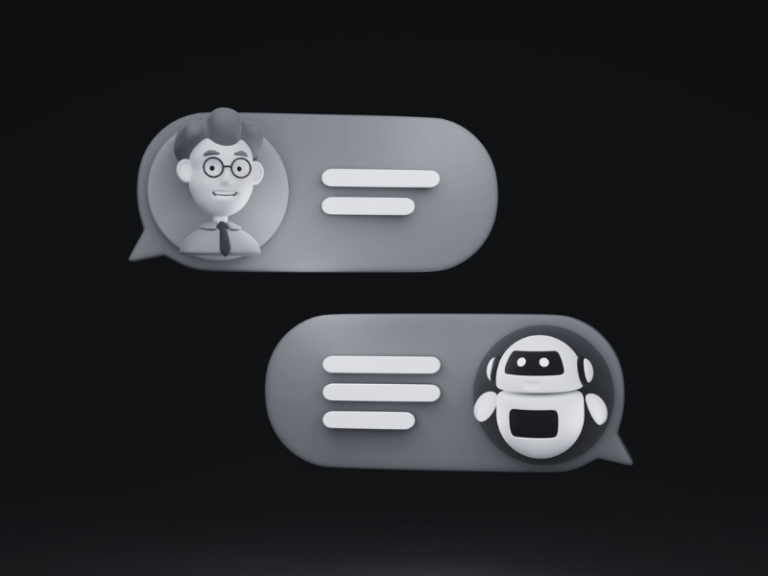Large language models (LLMs) are often considered powerful tools for generating solutions. However, it’s more precise to view them as creators of helpful somethings: valuable starting points, incomplete answers, rough drafts, etc. LLMs like Dialexa’s AI Studio, ChatGPT, Perplexity AI, and even image generators like Midjourney are designed for interactive, conversational engagement. The true value of these tools lies in how effectively we harness each interaction to synthesize data, explore new ideas, quickly iterate, and validate solutions.
So, how do you most effectively communicate with generative AI to achieve a marketable outcome? I leverage the following 1–2–3 approach:
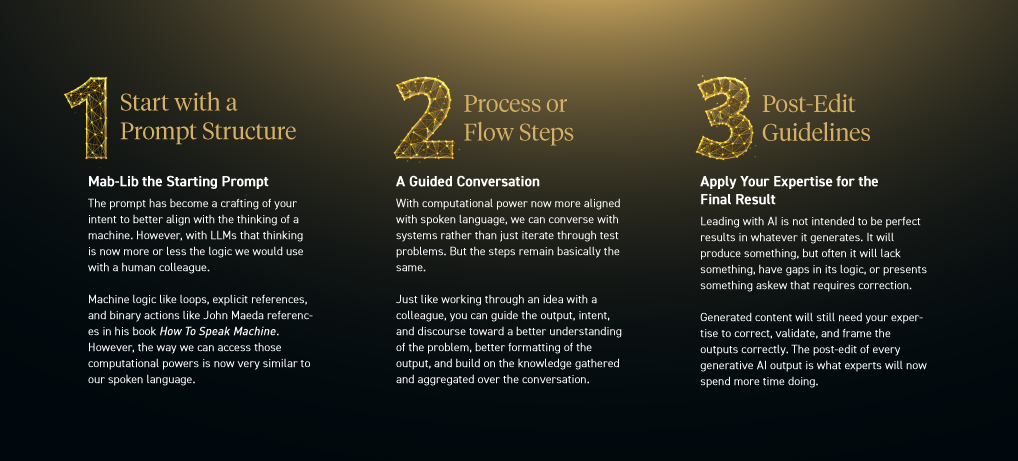
The Ideal Prompt Structure
Prompt engineering, a term that has skyrocketed into everyone’s expertise skills, is nothing more than knowing how to structure and craft your logic to better align with the machine’s logic. As John Maeda explains in his book How to Speak Machine, machine logic includes loops, explicit references, and binary actions. It is the form our code or algorithm takes to ensure a function is executed precisely as you want. However, how we can access these computational powers is now very similar to how we use our spoken language. That is the cultural power of LLMs.
Large language models have democratized prompt engineering because everyday people can interact with advanced technologies using the logic of their native tongue. The conversation isn’t so different from a kick-off conversation to collaborate with a colleague. First, you spell out the scenario. Then, the premise, the goal, and the problem.
I think of a prompt as a mad-lib you create to maximize your machine friends’ understanding and intent of the conversation you want to have. Take this four-part approach by Rich Theil from Product Forge. Start with the context, provide the specific information they need, present your desired outcome, and finalize it in the format you need. A simple structure for any content, insight, or research you want to generate.
A Mad Lib-esque, repeatable prompt structure will help you get to value faster:
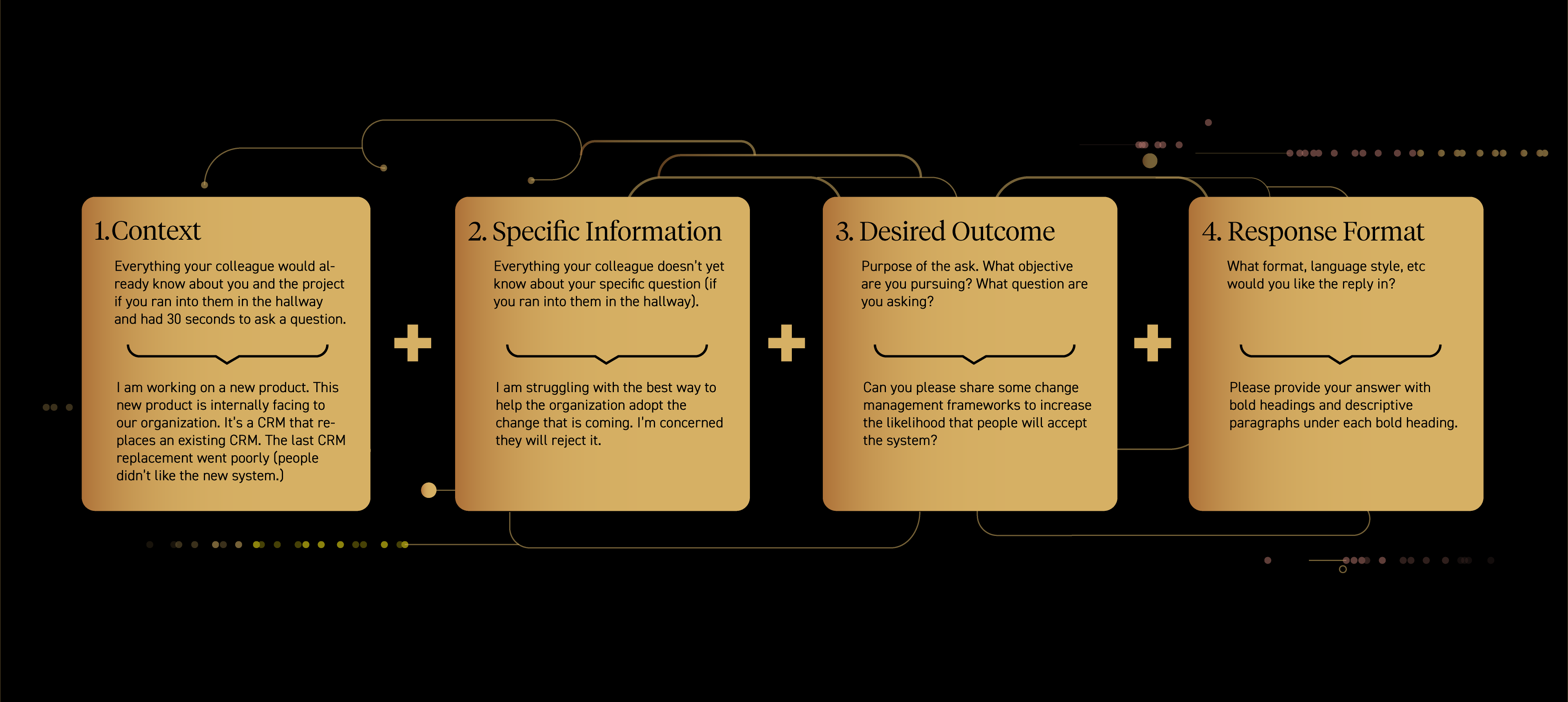
It’s critical to note that generative AI will rarely — if ever — provide you with an immediately marketable solution after your initial prompt. Like all creative acts, you have to guide an iterative process.
Guide the Conversation
Typically, to discover and create a solution, we iterate through test problems, trying one thing after another until we get a satisfactory result. Today, we refine solutions conversationally, but the steps are the same.
Just like working through an idea with a colleague, you can guide the output, intent, and discourse toward a better understanding of the problem, a better format of the output, and build on the knowledge aggregated over the conversation. A great up-skill to get the most from this part is to start with the why and carry that through, just like Simon Synek evangelizes from his book “Start With Why.” He introduces the Golden Circle as a framework of Why, How, and then What to guide the conversation with clarity of purpose, process, and outcomes. Applied with generative AI conversation it ensures a more accurate response for your marketable result that fits your business and customers.
When an output isn’t quite right, there are a few easy methods to get closer to a marketable outcome:
- Ask the AI to replace what is wrong.
- Upload resources and documents using ChatGPT or Dialexa’s AI Studio for conversation reference.
- Perplexity AI always provides sources for its answers. You can request that one source be emphasized over others.
- If you don’t know how to proceed, ask the AI how it would solve the problem, and then ask it to do that.
How to iterate using generative AI:
I asked Dialexa’s AI Studio to walk me through the best steps to have a fruitful conversation with a colleague to work through a problem. This guided collaboration flow is precisely how you can work with any generative AI tool and improve the marketable outcome. Here is the six-part flow, which, of course, you can leverage in your team collaborations, too:
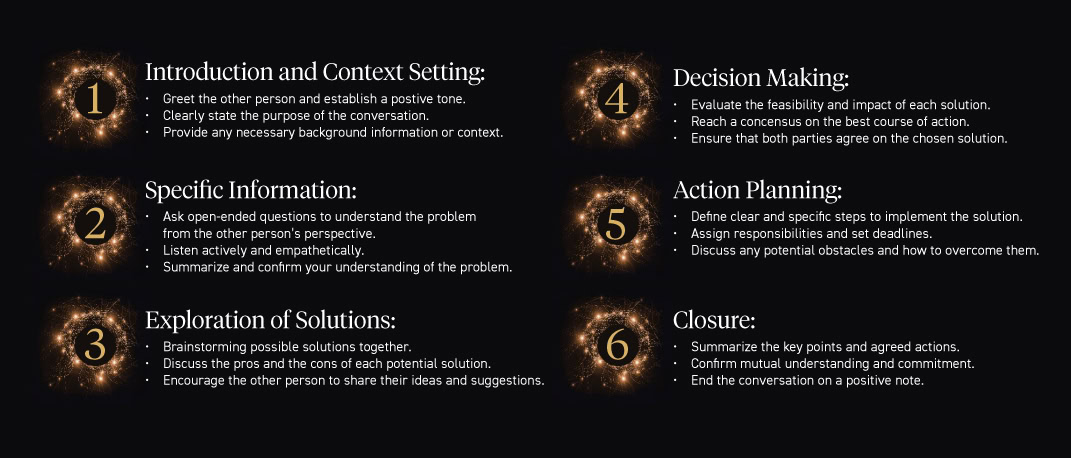
First, post the initial context and set your conversation’s tone, considering your desired outcome and formatting (an approach, a piece of code, etc.). As you work through identifying the problem and exploring solutions, you then make informed decisions and choose assumptions to guide the conversation forward given particular circumstances (i.e., what would be the response from a user if the screen was all black with white text?) Then, you iterate by changing one variable at a time until the path forward becomes more apparent to generate your final draft output.
Post-Edit Guidelines
It’s probably apparent by now that the generation of usable content through AI still relies heavily on human oversight and expertise. This is true all the way to the end. Artificial intelligence still needs your expertise to correct, validate, and frame outputs correctly because it simply doesn’t have the whole picture or particular context for what matters most to people. That’s where people finalize the solution for other people to benefit.
For example, UX designers may find an AI can understand the UI principles for a single page but not understand the flow a user might take across an application. Likewise, product owners may find that responses come out sounding robotic or overly formal and can adjust them to serve the delivery team better.
Touch-up needs will vary by role:
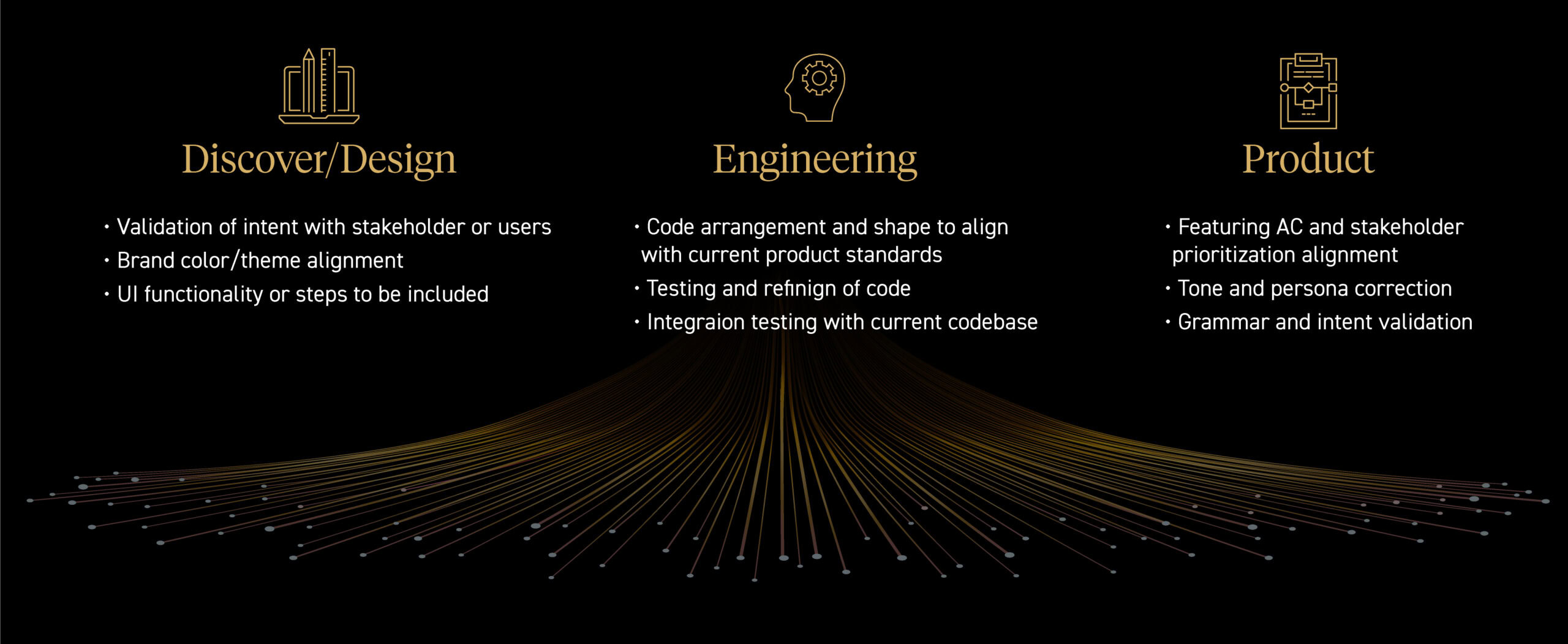
Systematic Approach
I personally recommend plugging in the same prompt to multiple generative AI models to compare answers and discover how you can best leverage them for your work. Some address certain tasks better than others. Secondly, I suggest you steal Rich’s prompt structure above as a systematic / mad-lib approach to generative tools and use it with everything. It can’t hurt to catalog common prompts in a prompt library for others at your enterprise to reference. i.e., where to begin with market research.
Generative AI is constantly evolving. While I can’t speak to the conversations we’ll have with models ten years from now, the trick to getting more value from them today hinges, ironically, on a highly human skill: communication. From initial prompts to final touches, generative AI outputs are only as useful as we are deliberate in our instruction. It’s time we all improved the quality of our communication, a skill Dialexa knows a thing or two about.
Explore how generative AI can accelerate your business goals, whether your enterprise is aiming to rebooting customer care, automating processes within a franchise, or empowering your medical sales teams.
Schedule a meeting!ABOUT THE AUTHOR

Jonathan Essary is an award-winning design researcher, product owner, and computational designer holding a Master of Architecture from UTA with an applied research specialty in complex systems design. He specializes in team building, coordination, forecasting, and data-driven strategies for vision alignment, gap analysis, and overall development of interdependent systems. Jonathan specializes in human-centric delivery and the socio-economic implications of emerging technologies of complex systems for people and places.



